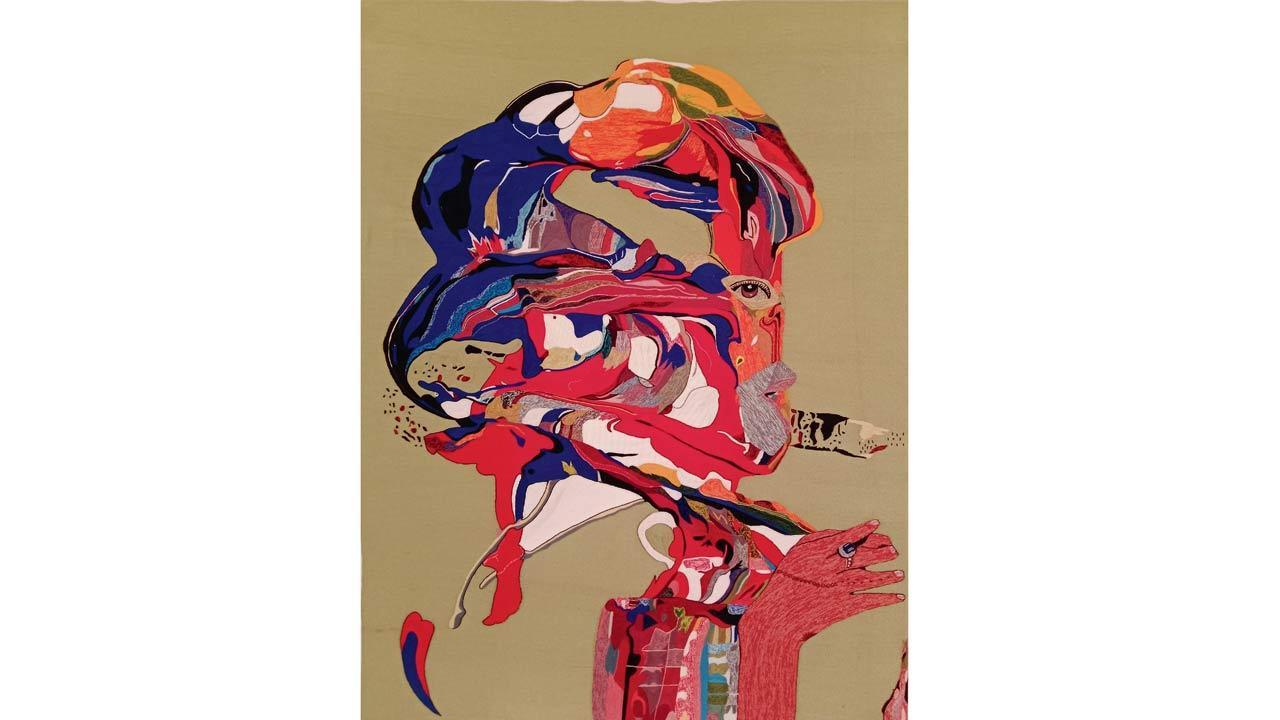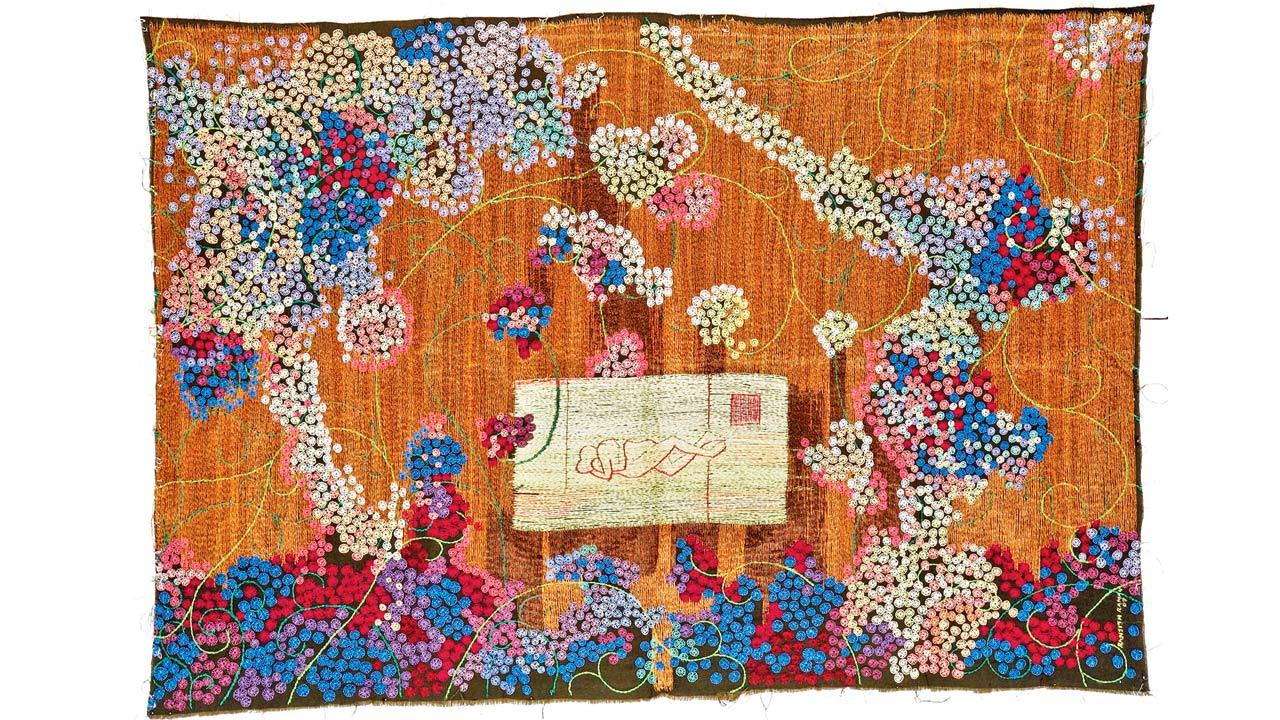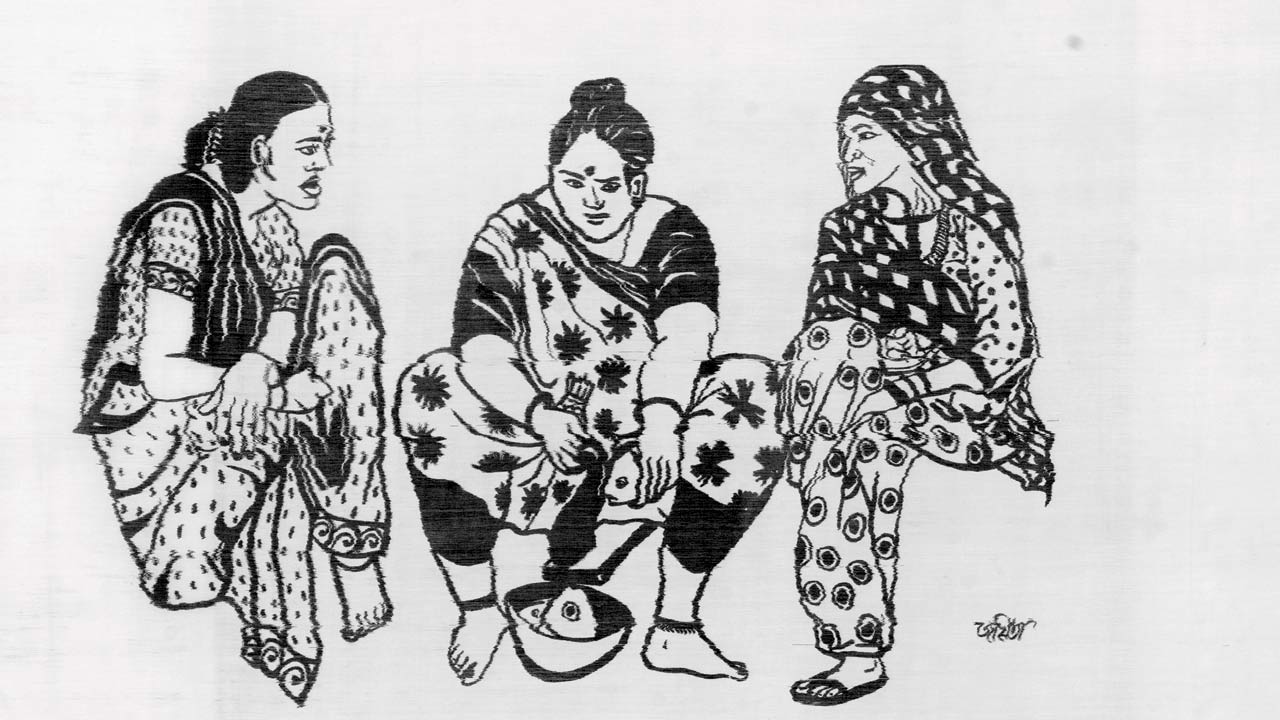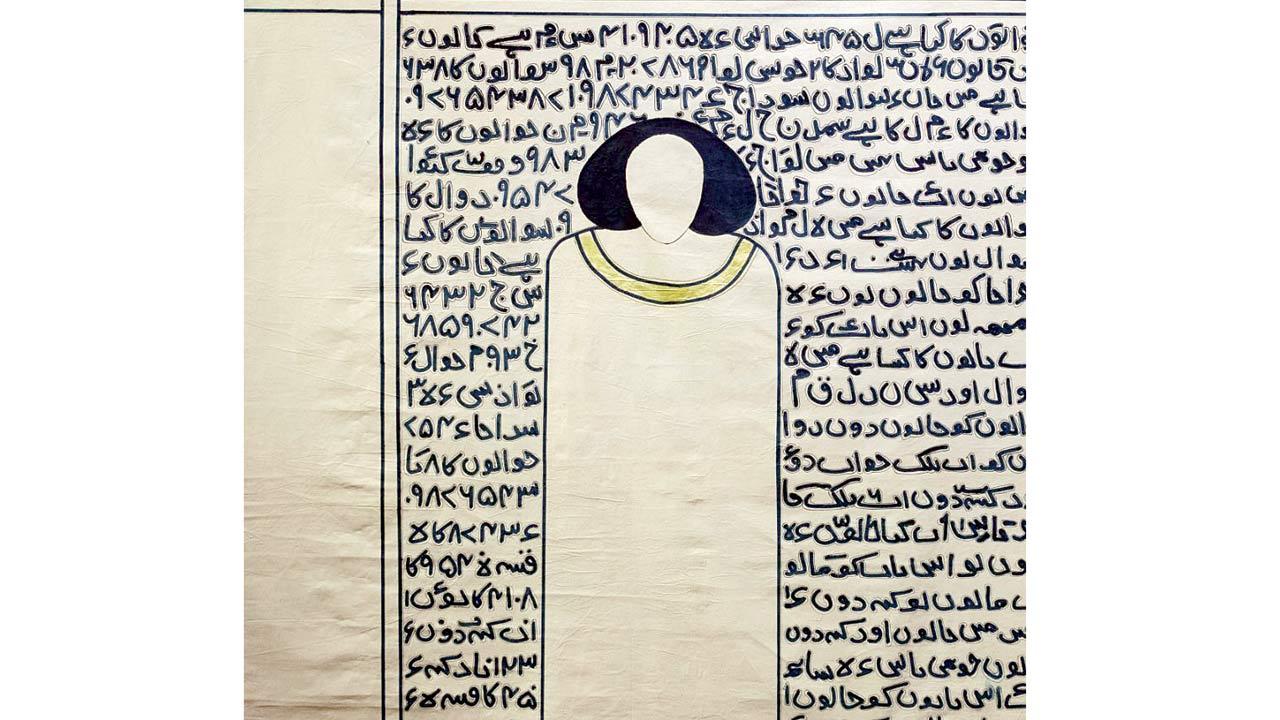The Woven Path, an upcoming group show at Space 118, explores fibre as fine art and reflects the growing fascination with textiles among contemporary artists, curators and collectors

Viraj Khanna’s Untitled, from Saloni Doshi Collection, blends figurative and surreal elements to explore themes of identity, emotion, and societal pressures. The vivid colours and swirling forms evoke self-perception and inner conflict, while textured threads reflect Khanna’s experimental approach, inspired by collage techniques from diverse sources. On view at Space 118 from November 14 to December 21
 When Saloni Doshi, a 44-year-old first-generation collector and patron, began acquiring textiles and fibre-based art in her 20s—starting with Raja Ravi Varma oleographs for her homes—she had certain advantages: money, time, and a family with generational ownership of artificial silk mills.
When Saloni Doshi, a 44-year-old first-generation collector and patron, began acquiring textiles and fibre-based art in her 20s—starting with Raja Ravi Varma oleographs for her homes—she had certain advantages: money, time, and a family with generational ownership of artificial silk mills.
ADVERTISEMENT
“My first introduction to textiles came from my mother, Saroj Doshi, and her love for handwoven sarees. Whenever I travelled across India for work or social events, she’d ask for specific sarees, like Kanchipuram silks,” she recalls. This early exposure honed Doshi’s discerning eye for patterns and borders. “In the process, I began buying for myself as well,” she adds.
 Ranjith Raman translates instinctive ideas into tactile forms using cotton, silk threads, glass beads and hand embroidery, giving abstract concepts tangible expression in Reminiscence of a Celestial Affair
Ranjith Raman translates instinctive ideas into tactile forms using cotton, silk threads, glass beads and hand embroidery, giving abstract concepts tangible expression in Reminiscence of a Celestial Affair
Her connection deepened further through her grandfather, Manilal Sunderji Doshi, who owned Mumbai’s oldest artificial silks mills, Bharat and BMK, and led Sasmira Textiles. “Reviving this part of my history helped me understand my passion for textiles,” she says.
In the early 2000s, Doshi had her first brush with the art world during an 11-month stint at Osians, a leading auction house at the time. There, her appreciation for visual arts expanded, leading to the creation of the Saloni Doshi Collection (SDC), which now includes over 800 contemporary artworks from India and South Asia across various visual genres.
 Sharan Apparao and Saloni Doshi
Sharan Apparao and Saloni Doshi
In 2009, Doshi established Space 118 in Mazgaon, a historic warehouse district in Mumbai, to support an emerging artistic community in need of studios and residences. The L-shaped campus, with five studio spaces, hosted the fine art photography series, The Right to Look I and II, in November 2023 and March 2024. “Having trained as a photographer and filmmaker under Jeroo Mulla at Sophia college, I wanted to start with photography; a medium few people were buying,” she recalls. “We were astonished by the response. It was incredible to see how eager people were to embrace and buy something so unique.”
Space 118 now serves as the backdrop for The Woven Path, an exhibition of textiles and fibre-based art from SDC, on view from November 14 to December 21.
 Jayeeta Chatterjee’s The Story is True 1, a cotton Pochampally handloom weave with silk screen-print, explores the lives of middle-class women, transforming everyday moments of reflection and domesticity into artistic expression
Jayeeta Chatterjee’s The Story is True 1, a cotton Pochampally handloom weave with silk screen-print, explores the lives of middle-class women, transforming everyday moments of reflection and domesticity into artistic expression
There’s something immediate and personal about artists using traditional materials to tell modern stories, especially when the living artists themselves may attend the exhibition. The slow, meticulous creation of each textile piece—shaped by hand over hundreds of hours—offers a counterpoint to our fast-paced, image-saturated lives, providing stillness in a world of choppy visual messages.
Curated by Sharan Apparao, the exhibition unfolds across five studios, revealing textiles and fibre-based works of art as powerful, expressive mediums. These works are made all the more compelling by their ubiquity and their ability to speak to the geopolitics of cloth. During a preview walkthrough with mid-day, a casually dressed Doshi spots a stray thread on one of the collage works and promptly directs her team to fix it.
 Arshi Ahmadzai’s Al-khansa aur ret ke hazaar zarro ko paani me pirona features a hand-painted, faceless figure on a large scroll, symbolising women’s anonymity and their shared experiences of suppression. The surrounding text evokes storytelling, grounding the piece in cultural and historical narratives surrounding identity and freedom
Arshi Ahmadzai’s Al-khansa aur ret ke hazaar zarro ko paani me pirona features a hand-painted, faceless figure on a large scroll, symbolising women’s anonymity and their shared experiences of suppression. The surrounding text evokes storytelling, grounding the piece in cultural and historical narratives surrounding identity and freedom
Over a month of video calls and in-person meetings, the Chennai-based gallerist and curator worked closely with Doshi to refine the collection, identifying a common theme that intertwines both the literal and metaphorical journey of a cotton seed.
This journey symbolises not only the birth and evolution of an idea but also prompts cotton’s ancient and fundamental role in human society and its place in myth. “Cotton, from thread to garment, was first fashioned for the divine and later adapted by humans. India, with its rich diversity of craft clusters, has nurtured wool, cotton and silk. It’s only natural that contemporary artists turn to fibre and textiles,” Apparao explains.
The exhibition follows this progression, moving from raw inspiration—much like a cotton seed—to human influence, and from abstraction toward clarity and purpose. Divided into thematic sections—The Source, Crystallisation, Alchemy, Transformation, and Realisation—each stage builds upon the previous, mirroring both natural processes and human intervention.
The daring integration of 16 heritage textiles such as Tangail, Dhakai Jamdani and Banaras silks, and Kutchi embroidery pieces with 64 contemporary works by 22 artists—including Anju Dodiya, Abraham & Thakore, Deena Pindoria, Varunika Saraf, Parul Thacker, Mohan Prajapat, Sabiha Dohadwala, Riddhi Patel, Mithun Das, Amjum Rizve, Neda Razavipour, Sriparna Dutta, and Viraj Khanna—contrasts classical and modern narratives. While blurring the boundaries of “fine art” and “craft”, their works also nudges us to reconsider the scope of what art can be. “Textile, too, can be art—if you appreciate it,” Doshi reflects.
“By pushing the boundaries of contemporary textile-based art, we hope to challenge perceptions of ancient craft in India,” adds Apparao, a self-confessed textiles connoisseur who, as a young student, worked with the Crafts Council of India over three decades ago.
“Patrons like Saloni, Lavina Baldota, and Lekha Poddar, who collect textile and fibre art with focus and perspective, are inspiring other collectors,” Apparao says. “I see this movement gaining momentum. It’s still in its infancy, but it’s not just going to spiral—it will snowball.”
 Subscribe today by clicking the link and stay updated with the latest news!" Click here!
Subscribe today by clicking the link and stay updated with the latest news!" Click here!







